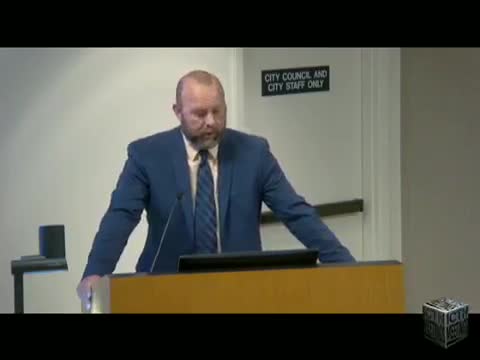City of Irving proposes $800K partnership with Dallas County for Rock Island Trail extension
May 29, 2025 | Irving, Dallas County, Texas
This article was created by AI summarizing key points discussed. AI makes mistakes, so for full details and context, please refer to the video of the full meeting. Please report any errors so we can fix them. Report an error »

The Irving City Council Work Session on May 29, 2025, focused on significant developments regarding local trail projects, particularly the Rock Island Road Trail and the Campion Trail Helm Fork Extension.
The meeting began with a presentation on the Rock Island Road Trail, part of the larger DFW Discovery Trail initiative aimed at connecting Fort Worth and Dallas. Since 2013, the North Central Texas Council of Governments (NCTCOG) has collaborated with five core cities, including Irving, to create a continuous regional trail. The completed 2.3-mile section from Irving to the Trinity Railroad Veil Way Express was highlighted, with plans for a new 1.1-mile concrete trail that will connect the Downtown Irving Heritage Crossing Station to the West Irving Station. The estimated cost for this project is $2.4 million, with Dallas County agreeing to reimburse Irving up to $800,000 for expenses incurred.
Mayor and council members expressed gratitude for the support from Dallas County, particularly acknowledging Dr. Garcia for her efforts in reallocating funds initially designated for a domestic violence shelter to this trail project. The council emphasized the importance of the trail for transportation, economic development, and tourism, as well as its potential health benefits.
Additionally, discussions included future enhancements along the trail, such as parks and historical markers, particularly in the Bear Creek area, which is significant for its historical African American community. The council aims to create spaces for cyclists and pedestrians that celebrate local history and provide amenities.
The session also touched on the Campion Trail Helm Fork Extension, with a resolution to award a contract for $4,135,200 to A and C Construction for Phase 1B of this project. This extension is part of ongoing efforts to enhance Irving's trail system.
Overall, the meeting underscored the city's commitment to improving its infrastructure and promoting alternative transportation options, while also recognizing the historical and cultural significance of the areas involved in these projects.
The meeting began with a presentation on the Rock Island Road Trail, part of the larger DFW Discovery Trail initiative aimed at connecting Fort Worth and Dallas. Since 2013, the North Central Texas Council of Governments (NCTCOG) has collaborated with five core cities, including Irving, to create a continuous regional trail. The completed 2.3-mile section from Irving to the Trinity Railroad Veil Way Express was highlighted, with plans for a new 1.1-mile concrete trail that will connect the Downtown Irving Heritage Crossing Station to the West Irving Station. The estimated cost for this project is $2.4 million, with Dallas County agreeing to reimburse Irving up to $800,000 for expenses incurred.
Mayor and council members expressed gratitude for the support from Dallas County, particularly acknowledging Dr. Garcia for her efforts in reallocating funds initially designated for a domestic violence shelter to this trail project. The council emphasized the importance of the trail for transportation, economic development, and tourism, as well as its potential health benefits.
Additionally, discussions included future enhancements along the trail, such as parks and historical markers, particularly in the Bear Creek area, which is significant for its historical African American community. The council aims to create spaces for cyclists and pedestrians that celebrate local history and provide amenities.
The session also touched on the Campion Trail Helm Fork Extension, with a resolution to award a contract for $4,135,200 to A and C Construction for Phase 1B of this project. This extension is part of ongoing efforts to enhance Irving's trail system.
Overall, the meeting underscored the city's commitment to improving its infrastructure and promoting alternative transportation options, while also recognizing the historical and cultural significance of the areas involved in these projects.
View full meeting
This article is based on a recent meeting—watch the full video and explore the complete transcript for deeper insights into the discussion.
View full meeting
